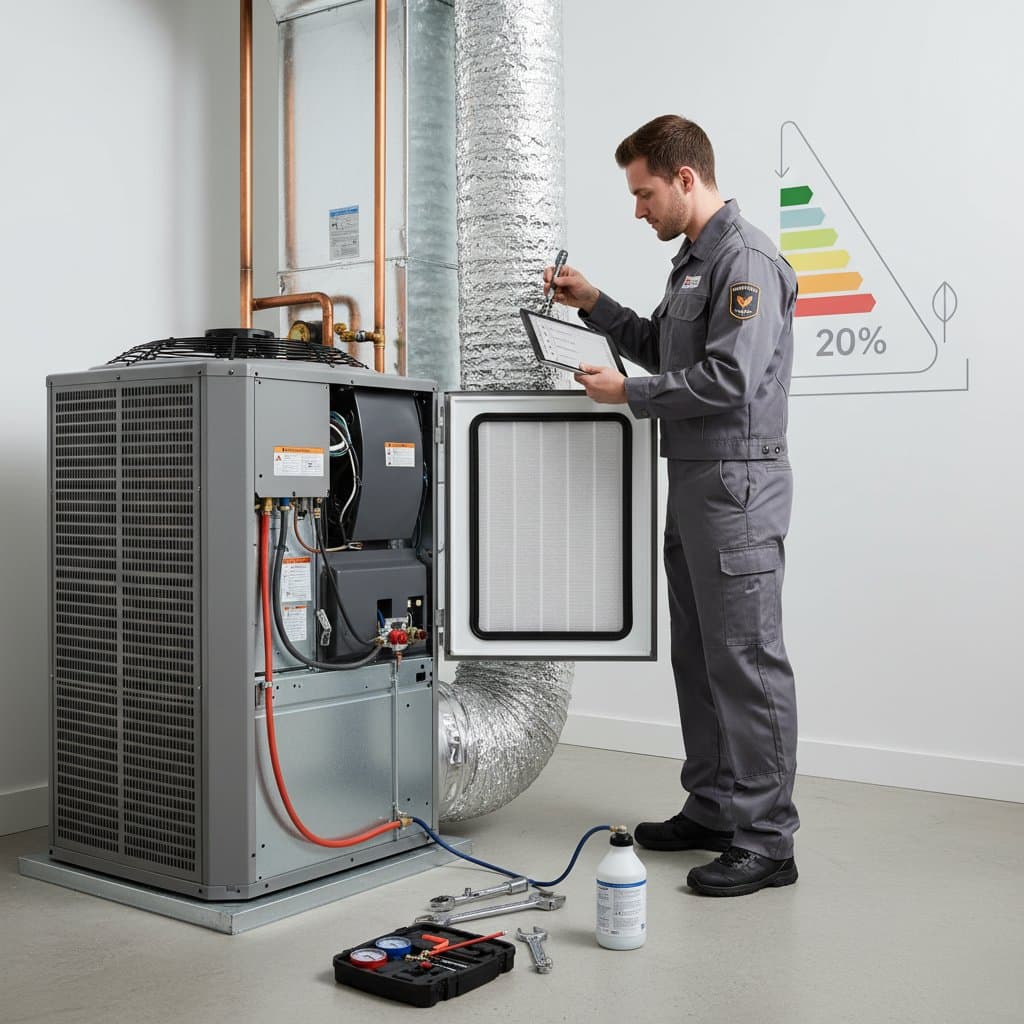Summer HVAC Maintenance: How Filter Changes Save Costs and Reduce Strain
As temperatures climb and humidity increases, your air conditioning system faces its heaviest workload. A properly maintained HVAC setup ensures clean, comfortable indoor air, but this depends on the condition of key components like the air filter. Regular replacement or cleaning of the filter lowers energy expenses, enhances cooling efficiency, and avoids unnecessary wear on the equipment. This article details effective filter management strategies for the summer months, highlights superior filter options, and provides homeowners with a practical maintenance framework for reliable performance.
Recognizing When to Replace Your HVAC Filter
Many homeowners delay filter checks until air quality declines noticeably, yet proactive monitoring prevents higher costs and complications. Identify these common indicators of filter inefficiency to address issues early:
-
Extended Cooling Times
The system takes longer to achieve the desired temperature, often due to airflow restrictions from a dirty filter. -
Inconsistent Air Distribution
Areas distant from the central unit may remain warmer, with reduced air output from vents. -
Dust Buildup Around Vents
Visible particles on or near vent covers signal that the filter no longer captures debris effectively. -
Worsening Indoor Allergies
Increased sneezing, coughing, or itchy eyes inside the home suggest the filter has become overloaded with allergens. -
Rising Energy Costs
A blocked filter forces the system to consume up to 15 percent more electricity to maintain cooling.
Perform a monthly inspection during peak usage periods to catch problems before they escalate into expensive repairs.
Guide to Replacing Your HVAC Filter
Filter replacement requires minimal tools and time, but following precise steps ensures safety and optimal function. Proceed as outlined below for seamless execution:
-
Power Down the HVAC System
Set the thermostat to off or disconnect power at the breaker panel to halt operation and airflow. -
Find the Filter Access Point
Consult your unit's manual or inspect near the return air grille or inside the blower housing for the slot. -
Extract the Used Filter
Gently pull it free, holding it steady to minimize dust disturbance in the surrounding area. -
Verify Specifications
Note the size (such as 16x25x1 inches) and MERV rating printed on the frame to select a compatible replacement. -
Install the Fresh Filter
Align the directional arrows on the filter frame with the airflow path, pointing toward the blower motor. -
Reassemble and Reactivate
Secure the access panel, restore power, and monitor for even, unobstructed air movement. -
Handle Disposal Responsibly
Place the old filter in a sealed plastic bag before discarding to contain any loose particles.
A frequent error involves reversing the filter orientation, which can halve system efficiency and increase strain on the blower. Always double-check the arrow indicators before closing the panel.
Decoding MERV Ratings for Optimal Filtration
The MERV rating, or Minimum Efficiency Reporting Value, quantifies a filter's particle-capture capability across various size ranges, with scores from 1 to 20. Higher numbers indicate finer filtration but potentially greater resistance to airflow.
-
MERV 1-4: Offers basic trapping of large debris like lint and pet hair, suitable for minimal needs.
-
MERV 5-8: Provides reliable everyday protection, capturing dust, pollen, and mold spores without overburdening standard systems.
-
MERV 9-12: Delivers enhanced defense against smaller allergens and smoke particles, ideal for allergy sufferers.
-
MERV 13-16: Achieves advanced purification comparable to medical environments, but requires HVAC units built to handle the added pressure drop.
For typical homes, filters rated MERV 8 to 11 strike the right balance between air quality and system longevity. Exceeding this without verifying your equipment's blower strength risks motor overheating and premature failure.
Insights from HVAC Experts and Homeowner Experiences
Technicians report that approximately 50 percent of midsummer service requests stem from airflow blockages caused by neglected filters. Online community discussions reveal that upgrading to higher-quality filters often yields energy savings of 10 to 15 percent on cooling bills.
Consider a case from a popular homeowner forum: In a multi-level residence, upper floors consistently felt stuffy despite a low thermostat setting. Investigation uncovered clogged filters in multiple return vents; swapping them out restored even temperatures throughout the house in under 24 hours.
Industry specialists from major manufacturers emphasize that overlooked maintenance can lead to evaporator coil icing, which disrupts cooling and necessitates professional intervention costing hundreds of dollars. Prioritizing filter care stands out as the most accessible method to extend equipment life and safeguard indoor health.
Establishing a Year-Round Maintenance Routine
Consistency in upkeep averts disruptions during intense heat spells. Adopt this tailored schedule to keep your system running smoothly:
-
Inspect and replace filters every month from May through September.
-
Vacuum return air vents and registers bimonthly to remove surface dust.
-
Arrange a comprehensive professional tune-up in early spring, before summer demands peak.
-
Maintain a two-foot clearance around the outdoor condenser unit, free of vegetation and debris.
-
Test and replace thermostat batteries at the start of each cooling season.
(Visual suggestion: Include a printable calendar graphic marking filter checks on the first of each summer month and annual inspections. Alt text: “HVAC maintenance calendar with filter replacement and service reminders.”)
Digital tools like programmable thermostats with built-in sensors can automate alerts for pressure drops, simplifying adherence for time-strapped families.
Steps to Optimize Your System This Season
Start by scheduling your next filter check today to capitalize on these efficiencies. Track your energy usage before and after changes to measure the impact firsthand. With diligent care, your HVAC will deliver reliable comfort while keeping operational costs in check through the hottest months.





